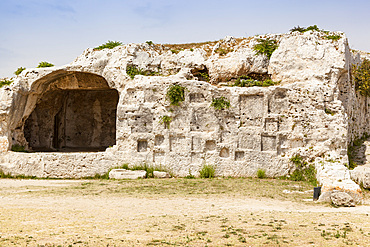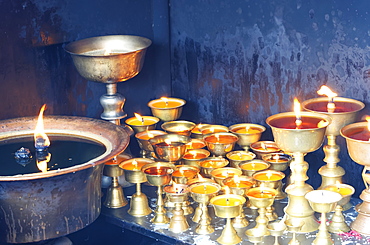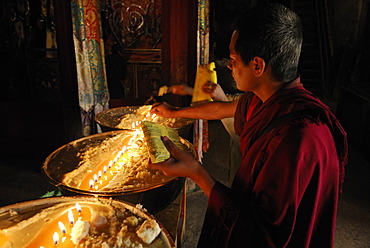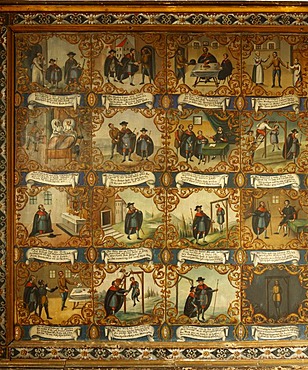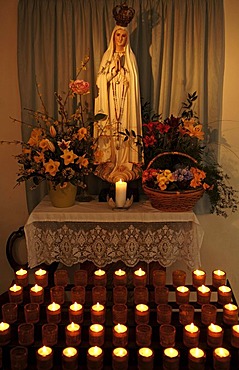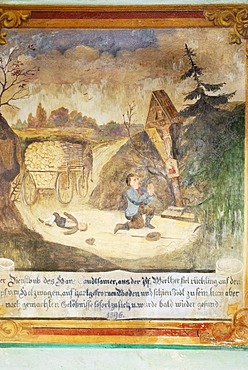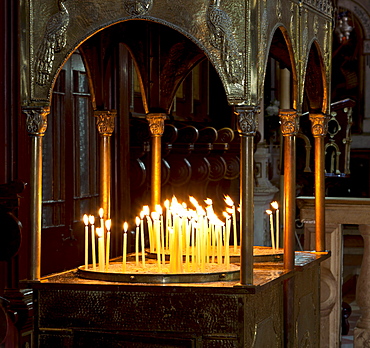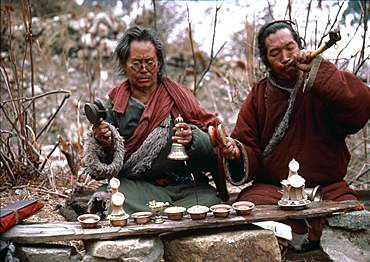Recent searches
Loading...
1336-966 - Ema wooden votive tablets in Meiji Shrine, Tokyo, Honshu, Japan, Asia
832-404149 - Votive tablets in the pilgrimage church of Maria Himmelfahrt in Sammarei, Klosterwinkel, Ortenburg, Lower Bavaria, Germany, Europe
832-404148 - Votive tablets in the pilgrimage church of Maria Himmelfahrt in Sammarei, Klosterwinkel, Ortenburg, Lower Bavaria, Germany, Europe
667-2786 - The newly renovated Votive Church (Votivkirche), Vienna, Austria, Europe
667-2785 - The newly renovated Votive Church (Votivkirche), Vienna, Austria, Europe
667-2784 - The newly renovated Votive Church (Votivkirche), Vienna, Austria, Europe
1350-6670 - Replica of the grotto at the Lady of the Lourdes shrine in the Convent of the Concepcionistas. Viveiro, Lugo, Galicia, Spain, Europe
1350-6669 - Wax body parts votive offerings at the Lourdes Grotto in the Convent of the Concepcionistas, a 1925 scale reproduction of the French grotto. Viveiro, Lugo Province, Galicia, Spain, Europe Galicia, Spain, Europe
1350-6144 - Prayer candles inside Swayambhunath temple, Kathmandu
746-90585 - Votive shrine on the side of Palazzo Salemi in Piazza del Monumento, city of Modica, Ragusa, Sicily, Italy, Europe; UNESCO World Heritage Site
1350-5009 - Niches in wall near Greek Theatre, Neapolis Archaeological Park, Syracuse, Sicily, Italy
832-384721 - Votive church Chiesa del Santissimo Redentore on the canal, Giudecca, Venice, Veneto, Italy, Europe
746-89882 - A votive aedicule depicting the Madonna in one of the main streets of the Sassi in Matera. The Sassi di Matera are ancient cave dwellings in the Italian city of Matera, Basilicata. Situated in the old town, they are composed of the Sasso Caveoso and the later Sasso Barisano. Matera, Basilicata, Italy, Europe
1238-135 - Heart-shaped ema votive offerings, Kamigamo shrine, Kyoto, Japan, Asia
851-796 - Votives (Ema prayer tablets) at Toshogu Shrine in Ueno Park, Tokyo, Japan, Asia
851-766 - Votives (Ema prayer tablets), with prayers and wishes for success at Kitano Tenmangu Temple, Kyoto, Japan, Asia
851-765 - Votives (Ema prayer tablets), with prayers and wishes for success at Kitano Tenmangu Temple, Kyoto, Japan, Asia
851-760 - Votives (Ema prayer tablets), with prayers and wishes for success at Kitano Tenmangu Temple, Kyoto, Japan, Asia
1238-121 - Small torii votive offerings, Fushimi Inari shrine, Kyoto, Japan, Asia
1238-122 - Ema votive offerings, Fushimi Inari shrine, Kyoto, Japan, Asia
1238-119 - Small torii votive offerings, Fushimi Inari shrine, Kyoto, Japan, Asia
1238-118 - Small torii votive offerings, Fushimi Inari shrine, Kyoto, Japan, Asia
1131-1047 - Votive candles, Boudhanath Stupa, UNESCO World Heritage Site, Kathmandu, Nepal, Asia
805-1096 - Terracotta horses, each a votive offering to village guardian deity, Ayyanar, at the Solai Andavar shrine, Palathur, Tamil Nadu, India, Asia
805-1095 - Terracotta horses, each a votive offering to village guardian deity, Ayyanar, at the Solai Andavar shrine, Palathur, Tamil Nadu, India, Asia
805-964 - Stone votive stupas found at the site of 5th century Ratnagiri monastery by the Archaeological Survey of India, Ratnagiri, Odisha, India, Asia
1238-42 - Votive offerings and discarded fortunes, Sanzen-in Temple, Kyoto, Japan, Asia
746-6527 - Votive statue, Hera Argiva museum, Capaccio-Paestum, Campania, Italy
746-6526 - Votive statue, Hera Argiva museum, Capaccio-Paestum, Campania, Italy
746-50076 - Votive offering, Santiago de Cuba, Cuba, West Indies, Central America
1238-3 - Small porcelain hogs as votive offerings, Marishisonten-do temple, Kyoto, Japan, Asia
832-368639 - Pilgrim and Tibetan monks refilling the brass bow with yak butter, Samye Monastery, Tibet, China, Asia
832-377927 - Votive tablets in the church of the monastery Loukous near Astros, Peloponnese, Greece
832-346686 - Votive candles in the side chapel of the church in El Rocio, Andalusia, Spain, Europe
832-326723 - Votive pictures in the Maria unter der Egg Pilgrimage Church, Peiting, Pfaffenwinkel, Upper Bavaria, Germany, Europe
832-288639 - Votive image from the Ostermiething Parish, Upper Austria, from 1785, to be spared from bad weather, Maria Geburt Pilgrimage Church, Maria Eck near Siegsdorf village, Chiemgau, Upper Bavaria, Germany, Europe
832-288654 - Seventeenth-century votive image depicting the Siege of Donauwoerth, Hl. Kreuz Gruftkapelle Church, Swabia, Bavaria, Germany, Europe
832-288638 - Votive image from 1745 for the saving from a terminal illness, Kirchwald Pilgrimage Church near, Nussdorf, Bavarian Inntal, Upper Bavaria, Germany, Europe
832-288640 - Votive image of 1818 from the Friedolfing Parish which was surprised by a thunderstorm in Maria Eck, Maria Geburt Pilgrimage Church, Maria Eck near Siegsdorf village, Chiemgau, Upper Bavaria, Germany, Europe
832-278311 - Entrance to the Wannian monastery, Mount Emei near Chengdu, China, Asia
832-278318 - Wannian monastery, Mount Emei near Chengdu, China, Asia
832-278314 - Votive candles, Wannian monastery, Mount Emei near Chengdu, China, Asia
832-278313 - Votive candles and incenses, Wannian monastery, Mount Emei near Chengdu, China, Asia
832-278319 - Children give votive candles, Wannian monastery, Mount Emei near Chengdu, China, Asia
832-276709 - Luesen Luson in The Val di Luson Luesener Tal under the Plose near Brixen Southern Tyrol Alto Adige Italy church St. George Lourdes Mary
832-276949 - Holy Chapel gallery with votive pictures Kapellplatz Altoetting Upper Bavaria Germany
800-1807 - Votive Church, Szeged, Southern Plain, Hungary, Europe
800-1811 - Votive Church, Szeged, Southern Plain, Hungary, Europe
800-1809 - Interior of Votive Church, Szeged, Southern Plain, Hungary, Europe
800-1810 - Interior of Votive Church, Szeged, Southern Plain, Hungary, Europe
800-1813 - Votive Church, Szeged, Southern Plain, Hungary, Europe
832-270185 - Young couple lighting votive candles in the Milan Cathedral, Duomo di Milano, Milan, Lombardy, Italy, Europe
832-237154 - Votive chapel, Marienweiher monastery, pilgrimage church, district of Kulmbach, Upper Franconia, Bavaria, Germany, Europe
832-238860 - Sacrificial candles in the church of Panagia Angeloktistos, built from the angels, UNESCO World Heritage Site, Kiti, Cyprus, Greek section, Southern Europe, Europe
832-236606 - Mary pieta, Catholic pilgrimage site, miraculous image of the Painful Mother of God, candles, Ziemetshausen, In den Stauden, Swabia, Bavaria, Germany, Europe
832-236603 - Mary pieta, Catholic pilgrimage site, miraculous image of the Painful Mother of God, candles, Ziemetshausen, In den Stauden, Swabia, Bavaria, Germany, Europe
832-236605 - Mary pieta, Catholic pilgrimage site, miraculous image of the Painful Mother of God, candles, Ziemetshausen, In den Stauden, Swabia, Bavaria, Germany, Europe
832-236604 - Mary pieta, Catholic pilgrimage site, miraculous image of the Painful Mother of God, candles, Ziemetshausen, In den Stauden, Swabia, Bavaria, Germany, Europe
832-231730 - Figure of St Mary, votive candles in a chapel, Regensburg, Upper Palatinate, Bavaria, Germany, Europe
809-5646 - Votive offerings in Our Lady of Bonfim church, Salvador, Bahia, Brazil, South America
832-232040 - Votive candles in the Church of Our Lady, Dresden, Saxony, Germany, Europe
832-222086 - Sacrificial candles in the Basilica St. Eufemia in Grado, Italy, Europe
832-204520 - Pilgrimage Church of Maria Steinbach, Maria Steinbach, Allgaeu, Bavaria, Germany, Europe
832-198048 - Votive Church, Ringstrasse, ring road, Vienna, Austria, Europe
832-194069 - Sacrificial candles, Mariahilf Church, Au district, Munich, Bavaria, Germany, Europe
832-192502 - Ex voto votive, lime paint, representation of the miraculous rescue of a carriage from the waters of a river, 16th century, Tuntenhausen, Bavaria, Germany, Europe
832-176028 - Vineyards of Trittenheim, Moselle, Rhineland-Palatinate, Germany, Europe
832-192501 - Ex voto votive, lime paint, representation of a vehicle accident with miraculous rescue, 16th century, Tuntenhausen, Bavaria, Germany, Europe
832-156860 - Memorial place of the 1st anniversary of the massacre of Winnenden and Wendlingen, Winnenden, Baden-Wuerttemberg, Germany, Europe
832-155639 - Icons, burning candles, Russian Orthodox Church, Altea, Costa Blanca, Alicante province, Spain, Europe
832-155640 - Icons, burning candles, Russian Orthodox Church, Altea, Costa Blanca, Alicante province, Spain, Europe
832-173534 - Votive candles in the Wallfahrtskirche Mary Eck sanctuary, burning candles, Chiemgau, Bavaria, Germany, Europe
832-158577 - Candles burning in the Armenian orthodox church at Geghard monastery near Garni, UNESCO World Heritage Site, Kotayk region, Armenia, Asia
832-156865 - 1st anniversary of the massacre of Winnenden-Wendlingen, a path of pebbles with messages for the way into the future, Winnenden, Baden-Wuerttemberg, Germany, Europe
832-167986 - Devotional grotto with Madonna and votive candles in the courtyard of the Basilika Goessweinstein basilica, Balthasar-Neumann-Strasse 7, Goessweinstein, Upper Franconia, Bavaria, Germany, Europe
832-142557 - Candles in front of an icon of Our Lady in Salzburg Cathedral, Salzburg, Salzburg, Austria, Europe
832-137598 - Sign saying "warum?", "why?", and candles to commemorate the victims of the stampede at the Love Parade 2010, Duisburg, Ruhr Area, North Rhine-Westphalia, Germany, Europe
832-137601 - Candles to commemorate the victims of the stampede at the Love Parade in 2010, Duisburg, Ruhr Area, North Rhine-Westphalia, Germany, Europe
832-112149 - Christ of the Last Judgement, Byzantine-Romanesque votive chapel, Memorial Chapel St. Ludwig to commemorate King Ludwig II near Berg on Lake Starnberger See, Fuenfseenland area, Upper Bavaria, Bavaria, Germany, Europe
832-116761 - Votive candles, Church of Moni Panagia Theotokou Monastery, Paleokastritsa, north-west Corfu, Corfu Island, Ionian Islands, Greece, Southern Europe, Europe
832-112148 - Detail of the ornamentation in the Byzantine-Romanesque votive chapel, Memorial Chapel St. Ludwig to commemorate King Ludwig II near Berg on Lake Starnberger See, Fuenfseenland area, Upper Bavaria, Bavaria, Germany, Europe
832-79065 - Burning votive candles in a church, St. Martin's Church, Landshut, Lower Bavaria, Bavaria, Germany, Europe
832-79064 - Burning votive candles in a church, St. Martin's Church, Landshut, Lower Bavaria, Bavaria, Germany, Europe
832-62024 - Deepaks, little candles made from ghee, widely used for offerings, Kathmandu, Nepal, South Asia
832-62690 - Votivkirche, Votive Church, Vienna, Austria, Europe
832-61716 - Offerings from pilgrims who receive the blessings of Bahubali by local priests on Indragiri hill in Sravanabelagola, Karnataka, India, Asia
832-61826 - Candles as offerings for peace inside the Frauenkirche church, Dresden, Saxony, Germany, Europe
832-49926 - Basilica di Santa Maria della Salute Church, Votive Church, Grand Canal, Vaporetto, Venice, Italy, Europe
832-50928 - Votive candles, Peterskirche church, St. Peter's Church, Munich, Bavaria, Germany, Europe
1116-11271 - Thanksgiving plaques on a shrine at the Difunta Correa Sanctuary, Vallecito, San Juan, Argentina. La Difunta Correa is the most popular of Argentina's folk saints. She was a woman whose husband was forcibly recruited around the year 1840, during the Argentine civil wars. Becoming sick, he was then abandoned by partisans. In an attempt to reach her sick husband, Deolinda took her baby and followed the tracks of the partisans through the desert of San Juan Province. When her supplies ran out, she died. Her body was found days later by gauchos, however they found the baby still alive, feeding from the deceased woman's miraculously ever-full breast. Once the folk tale became known, her devout followers believe her to perform miracles and intercede for the living. Cattle keepers and truck drivers create small altars throughout Argentina and leave bottles of water as votive offerings.
1116-11272 - Thanksgiving plaques on a shrine at the Difunta Correa Sanctuary, Vallecito, San Juan, Argentina. La Difunta Correa is the most popular of Argentina's folk saints. She was a woman whose husband was forcibly recruited around the year 1840, during the Argentine civil wars. Becoming sick, he was then abandoned by partisans. In an attempt to reach her sick husband, Deolinda took her baby and followed the tracks of the partisans through the desert of San Juan Province. When her supplies ran out, she died. Her body was found days later by gauchos, however they found the baby still alive, feeding from the deceased woman's miraculously ever-full breast. Once the folk tale became known, her devout followers believe her to perform miracles and intercede for the living. Cattle keepers and truck drivers create small altars throughout Argentina and leave bottles of water as votive offerings.
749-1345 - The miracle room with votive offerings and prayers next to the Basilica do Bom Jesus de Matosinhos, Congonhas, Minas Gerais, Brazil, South America
1196-219 - Nepal. Ritual, sonam/boom. Lobsangs cremation. Humla. traveler reached of journey! In freedom of infinite he is free from sorrow, fetters that bound thrown away, burning fever of life is no more,oesays dharmapada. Lobsang having spent whole life preparing moment of death, finds liberation on february 14, 1986. Extensive ritual follows cremation-traditionally a forty nine period, sonam lama rattles damaru. A small ritual drum to have origin in - shamanism. damaru, used as a tantric device to summon gods ward evil spirits, once made from human skull bone dreid human skin as a reminder of impermanence of body. Boom lama blows a kangling, a human thigh-bone horn. kangling is used in exorcism is capable of gods demons. Traditionally, best bones a kangling come from brahmans, particularly sixteen-year- brahman girls-or from tigers. On makeshift altar rest chhome, votive lamps filled with butter, cups of water, grains, tormas, holy food made of barley meal decorated with medallions of butter offered to gods. Alone, boom lama continues prayers of deceased
746-65636 - Saint Silverio aedicula, Ponza Island, Pontine Islands, Lazio, Italy
809-2793 - Prince of Peace votive Catholic church, St. Augustine, Florida, United States of America, North America
809-3331 - Votive papers at Kun Lam temple, Macao, China, Asia










